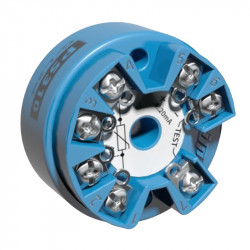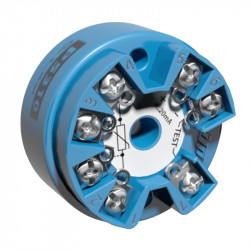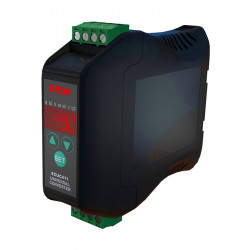Трябва да сте влезли в
-
moreX
-
Компоненти
-
-
Category
-
Полупроводници
- Диоди
- Тиристори
- Електроизолирани модули
- Изправителни мостове
-
Транзистори
- Транзистори | GeneSiC
- Модули SiC MOSFET | Mitsubishi
- Модули SiC MOSFET | STARPOWER
- ABB SiC MOSFET модули
- IGBT модули | MITSUBISHI
- Транзисторни модули | MITSUBISHI
- MOSFET модули | MITSUBISHI
- Транзисторни модули | ABB
- IGBT модули | POWEREX
- IGBT модули | INFINEON (EUPEC)
- Полупроводникови елементи от силициев карбид
- Go to the subcategory
- Драйвeри
- Силови блокове
- Go to the subcategory
- Електрически преoбразователи
-
Пасивни компоненти (кондензатори, резистори, предпазители, филтри)
- Резистори
-
Предпазители
- Миниатюрни предпазители за електронни системи серия ABC и AGC
- Бързи тръбни предпазители
- Закъснителни вложки с характеристика GL/GG и AM
- Ултрабързи стопяеми вложки
- Бързи предпазители британски и американски стандарт
- Бързи предпазители европейски стандарт
- Тягови предпазители
- Високоволтни предпазителни вложки
- Go to the subcategory
-
Кондензатори
- Кондензатори за двигатели
- Електролитни кондензатори
- Кондензатори тип snubbers
- Кондензатори за мощност
- Кондензатори за DC (постояннотокови вериги)
- Кондензатори за компенсиране на мощност
- Високоволтови кондензатори
- Кондензатори за индукционно нагряване
- Кондензатори за съхранение на импулси и енергия
- DC LINK кондензатори
- Кондензатори за AC/DC вериги
- Go to the subcategory
- Филтри EMI (против смущения)
- Суперкондензатори
-
Защита от пренапрежение
- Защита от пренапрежение за коаксиални приложения
- Защита от пренапрежение за системи за видеонаблюдение
- Защита от пренапрежение за захранващи кабели
- Ограничители за пренапрежение за LED
- Ограничители за пренапрежение за фотоволтаици
- Защита на системата за претегляне
- Защита от пренапрежение за Fieldbus
- Go to the subcategory
- Go to the subcategory
-
Релета и контактори
- Теория- релета и контактори
- Полупроводникови релета АС 3-фазни
- Релета полупроводникови DC
- Регулатори, управляващи системи и аксесоари
- Системи за мек старт и реверсивни контактори
- Електромеханични релета
- Контактори
- Ротационни превключватели
-
Полупроводникови релета АС 1-фазни
- Полупроводникови релета AC еднофазни серия 1 | D2425 | D2450
- Полупроводникови релета AC еднофазни серия CWA I CWD
- Полупроводникови релета AC еднофазни серия CMRA I CMRD
- Полупроводникови релета АС ендофазни серия PS
- Полупроводникови релета AC двойни и четворни серия D24 D, TD24 Q, H12D48 D
- 1-фазни полупроводникови релета серия gn
- Полупроводникови релета АС серия ckr
- Релета AC еднофазни на шина DIN серия ERDA и ERAA
- Еднофазни AC релета за ток 150А
- Двойни полупроводникови релета, интегрирани с радиатор за DIN шина
- Go to the subcategory
- Полупроводникови релета АС 1-фазни, за печатни платки
- Интрфейс релета
- Go to the subcategory
- Индукционни елементи
- Радиатори, Bаристори, Tермични защити
- Вентилатори
- Климатизация, Оборудване за електрически шкафове, Охладители
-
Батерии, зарядни устройства, буферни захранвания и инвертори
- Батерии, зарядни устройства - теоретично описание
- Литиево-йонни батерии. Персонализирани батерии. Система за управление на батерията (BMS)
- Батерии
- Зарядни устройства и аксесоари за батерии
- UPS резервно захранване и буферни захранвания
- Преобразуватели и аксесоари за фотоволтаици
- Енергиен запас
- Горивни клетки
- Литиево-йонни батерии
- Go to the subcategory
-
Автоматика
- Futaba Drone Parts
- Крайни изключватели, Микроизключватели
- Датчици, Преобразователи
- Пирометри
- Броячи, Времеви релета, Панелни измервателни прибори
- Промишленни защитни устройства
- Светлинна и звукова сигнализация
- Термокамера
- Екрани LED
- Управляваща апаратура
-
Регистратори
- Регистратор на температура със запис на лента и цифров показател - AL3000
- Микропроцесорни регистратори с екран LCD серия KR2000
- Регистратор KR5000
- Измервател със функция за регистриране на влажност и температура HN-CH
- Експлоатационни материали за регистратори
- Компактен графичен регистратор 71VR1
- Регистратор KR 3000
- Регистратор РС серия R1M
- Регистратори РС серия R2M
- Регистратор РС - 12 изолирани входа– RZMS
- Регистратор PC, USB, 12 изолирани входа – RZUS
- Go to the subcategory
- Go to the subcategory
-
Проводници, Кабел литцендрат, Кабелни канали, Меки връзки
- Проводници
- Кабел литцендрат
-
Кабели за специални приложения
- Компенсиращи и удължаващи проводници
- Проводници за термодвойки
- Съединителни проводници за РТ датчици
- Многожилни проводници темп. -60C до +1400C
- SILICOUL проводници средно напрежение
- Запалителни проводници
- Нагревателни проводници
- Едножилни проводници темп. -60C до +450C
- Проводници за ЖП приложения
- Нагревателни проводници в Ех изпълнение
- Go to the subcategory
- Кабелни канали
-
Плетени кабели
- Плоски плетени кабели
- Кръгли плетени кабели
- Много гъвкави плетени кабели - плоски
- Много гъвкави плетени кабели - кръгли
- Медни цилиндрични плетени кабели
- Медни цилиндрични плетени кабели и канали/кожуси
- Гъвкави заземяващи ленти
- Плетени проводници от оцинкована и неръждясваща стомана
- Медни изолирани плетени проводници PCV -температура до 85 градуsа по C
- Плоски плетени алуминиеви проводници
- Комплект за подсъединение - плетени проводници и тръбички
- Go to the subcategory
- Оборудване за тяга
- Кабелни накрайници
- Изолирани еластични шини
- Многослойни еластични шини
- Системи за провеждане на кабели (шлауфи)
- Кабелни канали / маркучи
- Go to the subcategory
- View all categories
-
Полупроводници
-
-
- Suppliers
-
Applications
- AC и DC задвижвания (инвертори)
- CNC машинни инструменти
- Energy bank
- HVAC автоматизация
- Двигатели и трансформатори
- Заваръчни машини и заваръчни машини
- Захранващи (UPS) и токоизправителни системи
- Измерване и регулиране на температурата
- Измерване и регулиране на температурата
- Индукционно отопление
- Индустриална автоматизация
- Индустриална автоматизация
- Индустриални защитни устройства
- Компоненти за потенциално експлозивна атмосфера (EX)
- Машини за сушене и обработка на дървесина
- Машини за термоформоване на пластмаси
- Минно дело, металургия и основаване
- Оборудване за разпределителни, контролни и телекомуникационни шкафове
- Печат
- Трамвайна и железопътна тяга
-
Инсталация
-
-
Индуктори
-
-
Индукционни устройства
-
-
https://www.dacpol.eu/pl/naprawy-i-modernizacje
-
-
Обслужване
-
- Contact
- Zobacz wszystkie kategorie
Предаватели на температура
For years, we’ve been delivering automation components, such as industrial sensors and sensor systems. Above-mentioned category includes induction sensors, smoke, smog, humidity and temperature sensors, JSL-20/21 air flow sensors, and also...
For years, we’ve been delivering automation components, such as industrial sensors...
Категории
| Образ | Вижте продукта | Не. Производител | ||||
|---|---|---|---|---|---|---|
| picture_as_pdf |

|
JSP Industrial Controls | P5320 програмирани преобразователи с HART комуникация с галванична изолация | ВИЖ ГО | -- | On Order |
| picture_as_pdf |

|
JSP Industrial Controls | P5310 универсални програмирани на преобразователи с комуникция LHP | ВИЖ ГО | -- | On Order |
| picture_as_pdf |

|
Sisel | Конфигурируем универсален конвертор ENDA ECUC411 | ВИЖ ГО | -- | On Order |
For years, we’ve been delivering automation components, such as industrial sensors and sensor systems. Above-mentioned category includes induction sensors, smoke, smog, humidity and temperature sensors, JSL-20/21 air flow sensors, and also pressure switches, distance transducers, pressure and temperature transducers.
Why should you use temperature transducers?
Temperature transducers for industrial applications
The Temperature transducer is one of the most important elements in automation systems - they enable changing physical properties into measuring signal, which allows a control system to interpret the measurement’s values.
Applying a temperature transducer in an automation system adjusts the measuring signal from the temperature sensor (e.g. thermocouple or resistance sensor) to the required by the input analogue signal standard (e.g. 0-10V, 0-20mA) and eventually transferring it to other devices e.g. PLC controllers, recorders.
Applying temperature transducers in automation provides:
- Amplifying the signal from temperature sensor, its linearization and changing into a voltage or current signal - this provides increased resilience to electromagnetic disruptions and galvanic separation between the thermocouple’s circuit and input signal;
- Replacing compensation cables with a typical transmission cable;
- Cold junction compensation (CJC) if using thermoelectric sensors;
- Modern digital transducers are smart, flexible devices and offer precise measurements;
- Possibility to check current or previous temperature.
Types and applications of temperature transducers
There are many types of temperature transducers, including thermocouple, general-purpose or resistance. We distinguish:
- thermocouple transducers - also called flame sensors - mostly used in gas cookers,
- general-purpose transducers - used for precise temperature measuring on the basis of received current signal,
- resistance transducers - used mostly in temperature monitoring devices outside and inside the house. Can cooperate with an industrial computer, i.e. PLC controller.
This type of transducers is mostly delivered in three types of enclosures:
- head transducers - for thermometer’s junction head mounting,
- object transducers - for direct montage in technological installation,
- Rail mounted transducers - for panel construction.
Temperature transducers - application
Temperature transducers can be applied in a variety of industrial processes, machine and installation construction, but also in systems of daily usage devices.



